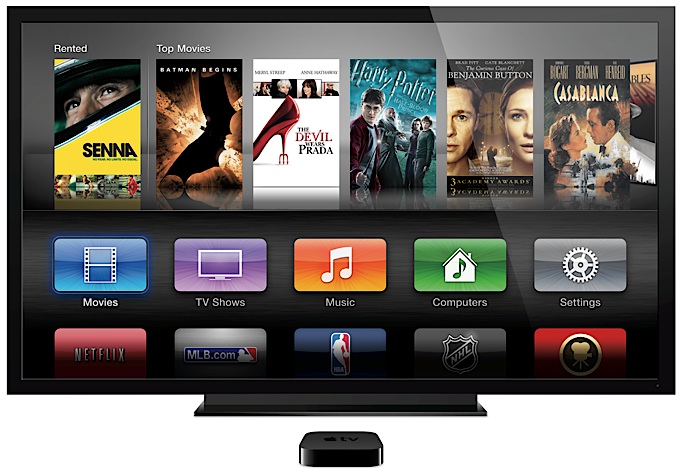One of the more intriguing revelations from Apple’s recent WWDC was that iOS 7 will ship with support for physical game controllers, much like the ones that now come with game consoles from the likes of Nintendo, Microsoft and Sony. While this nugget was barely mentioned during the keynote, its ripple effects may be huge — as I’ll get to shortly.
But before getting there, I want to explore what initially struck me as two likely obstacles in the way of success for iOS game controllers.
Touch vs. controller
First, iOS is all about a touch interface. Touching the screen is the main way, almost the only way, you interact with an iPhone or iPad. With a game controller in your hands, you won’t be touching the screen at all — at least not during game play. As such, the game controller is in conflict with a core property of iOS devices.
The same can be said, I suppose, about physical keyboards for iOS. Yet they have proven to be a popular peripheral. However, with keyboards, there is a direct translation of the actions taken: you can almost seamlessly switch back and forth between the two types of keyboard inputs without needing any significant relearning of how things work.
With most iOS games, especially ones that depend heavily on touch actions for game play, shifting to a game controller will likely require a significant amount of work, both for the game developer to modify the code and for the user to learn a different way to play.
In many cases, I expect such efforts will get “lost in translation.” One example of this is the mega-popular Angry Birds. There is a Mac version of the iOS game; you play it mainly using a trackpad or mouse as an input device. While not identical, this is similar to shifting to a game controller. No matter how many times I’ve tried, the Mac version never comes close to matching the simple intuitive experience of playing the game on an iOS device. To put it bluntly, Angry Birds on a Mac is a dud. As such, I do not look forward to a game controller version of Angry Birds.
On the other hand, the best candidates for conversion to a game controller are games that already work via a virtual version of such a controller, such as car racing games and many shooter games. Here, at least, I can see physical controllers having success. They may actually improve the game experience, as your fingers will not get in the way of seeing what’s on the screen.
Small vs. large
Even without the touch obstacle, there remains a second notable problem: size.
A typical game controller is at least the same size as an iPhone or iPod touch, usually larger. It strikes me as awkward to have a game display be significantly smaller than the controller you’re holding. There’s also the matter of convenience. Will iPod touch owners want to carry a game controller in their pocket, ready to pull out whenever they wish to play a game? I don’t think so. Doing so significantly lessens the appeal of the iPod touch as an on-the-go gaming device.
The iPad is a better match for a game controller here, but is not completely immune to these size problems.
Wait! There’s another iOS device…
Given these obstacles, it seemed to me that the potential market for iOS game controllers was a limited one at best. I’m confident that Apple is aware of all these considerations. Yet, they appear unconcerned. Why? With a bit more thought, the likely answer hit me…
There is another iOS device, beyond the iPhone, iPad, and iPod touch. It’s the Apple TV (ATV). Despite running on a variation of iOS, ATV doesn’t use a touch interface and it typically connects to large displays. In other words, ATV circumvents the very problems I’ve described here, making it a perfect candidate for working with a game controller.
Recall that earlier this year, Apple enabled Bluetooth keyboards to work with ATV. This dovetails nicely with forthcoming Bluetooth game controllers that would similarly work with ATV.
The final piece needed to make all of this fit together would be a separate Apple TV App Store, accessible from the ATV itself. From here, you could purchase games specifically designed to work with ATV and its non-touch interface. My Macworld colleague, Dan Frakes, came to a similar conclusion, as we tweeted a couple of weeks ago.
An Apple TV App Store might additionally include apps beyond games, such as TV network apps. This would allow users to add channels such as HBO GO without having to depend on Apple updating the ATV iOS to do so.
An Apple TV, combined with a game controller and an App Store, would quickly emerge as a serious contender for the top of the heap of game consoles. A recent article expanded on this theme, exactly predicting that “Apple TV will…dominate the console gaming market.” (Thanks to The Loop for pointing me to this article.)
I do see at least one obstacle for ATV to overcome: storage. Unlike iPhones, iPod touches, and iPads, there is no user-accessible internal storage in an Apple TV. So where will users save all the apps that they purchase and presumably download? Will Apple release a new ATV model, one that includes user-accessible space on an SSD? Will an ATV App Store only work with these latest devices? Or will Apple find some way, possibly via iCloud streaming, to make the system work with existing ATV’s?
I don’t know the answer. But I strongly suspect that Apple already has one. When iOS 7 gets released this fall, I predict that Apple will simultaneously announce a modified (either via hardware or software, or both) Apple TV as a primary target for game controller support.

